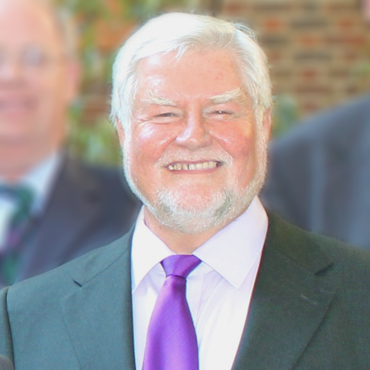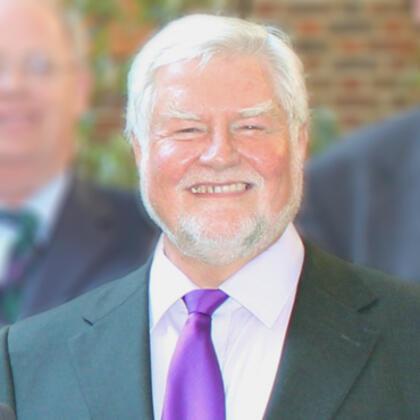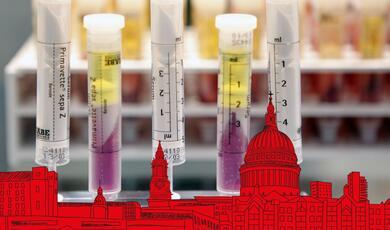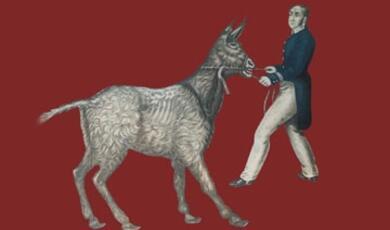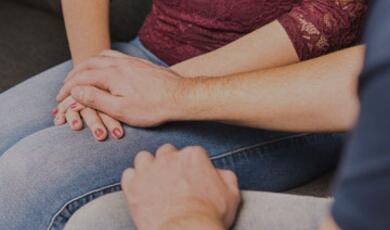Born Gay? The origins of sexual orientation
Share
- Details
- Text
- Audio
- Downloads
- Extra Reading
Are our sexual preferences acquired through social learning or are some people literally born gay? What are the genetic and prenatal hormone contributions of sexual orientation? How do 'gay genes' survive extermination by non-reproductiveness? What possible adaptive value might they have? Cultural and historical variations in acceptance/intolerance of minority sexual preferences.
Download Text
Born Gay? The origins of sexual orientation
Professor Glenn Wilson
19/4/2010
Sexual orientation is a very fundamental part of our nature that is established by the time we are born. There is precious little we can do about it, even if we wanted to.
People often talk about the "gay persuasion". But we cannot be persuaded by anyone to be gay, any more than we are persuaded to be straight. We are what we are, and no amount of seduction, contagion, preaching, coercion or "therapy" is likely to make much difference.
There is a famous graffiti exchange: "My mother made me a homosexual". "If I give her the wool, will she make me one too?" If mothers do make their children homosexual, they do so through genes and hormones - not by 'smothering' them or any other dubious child-rearing practices.
There are some who argue that homosexuality is a matter of what you do, rather than who you are. This is mistaken. In Iran the threat of hanging may lessen homosexual activity, but there are still plenty of gays. (Some are forced into a sex-change because, curiously, transsexualism is more acceptable to the State.) There is a tribe in the New Guinea highlands called the 'sambia', where the practice (until recently) was for younger boys to be isolated from all female company and to fellate older boys in order to ingest their virility. The early teens were spent performing fellatio and the later teens being fellated. If any cultural pressure was going to create homosexuality surely this would be it - only it didn't. Come adulthood, most Sambia males emerged as married heterosexuals - with only around 5% of "backsliders" continuing to seek boys to fellate them (Herdt, 1981). This is much the same as the proportion of gay males in Western society.
Something similar applies to sheep. It is normal for rams to mount other rams as an expression of play and dominance but that does not make them homosexual. However, around 6% of rams will only mount other rams and show no interest in females when given the choice. These "homosexual rams" show higher levels of oestrogen in a brain area called the amygdala, rather like ewes (Perkins et al, 1995). A bewildering variety of homosexual behaviour occurs in the wild but it often has social purposes rather than sexual and is therefore not a good model for human homosexuality. In bonobos, for example, homosexual behaviour, especially among females, seems to function to form bonds and ease social tension among group members (Bailey & Zuk, 2009). The fabled boy-love of ancient Greece was probably also more a matter of culturally prescribed behaviour than true sexual orientation.
It is not behaviour that defines sexual orientation but fantasies and preferences. These can be tested by erectile responses to different types of erotica. This 'sexual lie detector' reveals men as pretty much polarised, even those calling themselves 'bisexual'. Men respond either to female images, or to male, but seldom both. Women, however, seem to have innate bisexual potential - both heterosexual women and lesbians respond fairly equally to male and female erotica (Rieger et al, 2005). This is one of several reasons to think that female sexuality is less written in stone. A BBC internet survey of more than 250,000 people around the world revealed that high sex drive in women is associated with increased attraction to both men and women, but in men is associated with increased attraction to either men or women, according to sexual orientation (Reimers, 2007)
Estimates of homosexuality in males are usually around 4-5%. This might seem low but that may be because the high profile of certain gay individuals (particularly in show business) leads us to suppose that gay people are more prevalent than they really are. Gay people gravitate towards particular centres of population, such as London, San Francisco and Sydney, where their presence is more striking (Johnson et al, 2001). In rural areas the proportion of gay men is much lower (c.f., Dafydd, in the comedy TV series Little Britain, who covets his status as "the only gay in the village"). The incidence of lesbianism is more difficult to assess because it seems less biologically determined. Some estimates suggest that only about 2-3% of women are exclusively lesbian throughout life, though (as noted) the capacity for bisexuality is higher in women than in men. Only a tiny proportion of men (1-2%) claim to have shifted orientation but the figures are higher (up to 10%) for women (Dickson et al, 2003).
One of the first clues that people are born rather than made gay is that sex role behaviour, interests, toy and play preferences that relate to adult sex orientation can be observed from the earliest years. Some girls are described as "tomboys" and boys identified as 'sissies' when very young, usually by the age of 3. This is technically known as childhood gender nonconformity and it is strongly predictive of homosexuality in adulthood (Lippa, 2008). About 75% of CGN children grow up to be gay or lesbian. This would seem to place the origins of sex orientation much earlier than any supposed incidents of seduction and contagion in the early teens
Observation of certain intersexual conditions also points to the conclusion that sexual orientation is inborn. For example, congenital adrenal hyperplasia (CAH) is a genetic disorder in women that causes an excess of male sex hormone to be produced by the adrenal glands. This causes masculinisation of the body at the same time as increasing the likelihood of attraction to other females (around 40-50%). Sex reassignment, when not sought by transsexuals, has notoriously failed. In a famous case, one of a pair of identical twin boys was reassigned as female at the age of 17 months, after a botched circumcision. Dr John Money of Johns Hopkins University Medical School, who was in charge of the case, reported that at age 9 "Brenda" had successfully adjusted to the female identity (Money, 1975) and the case was celebrated as proof that sexual identity was malleable by upbringing. Unfortunately, Brenda had never really accepted the role and by age 14 had reverted to being a boy. Thoroughly unsettled, he committed suicide at the age of 38.
When we say that a trait is inborn, people are inclined to think of genetics. Sexual orientation does run in families and a genetic component is evidenced by the greater concordance of identical, relative to fraternal, twins (about 2-3x). But genes contribute only about one-third of the variance, maybe even less for women. Of greater importance are hormonal events occurring during prenatal development that influence the way brain circuits involved in sexual preferences are organised. The fact that identical twins discordant for sexual orientation do occur seems to implicate epigenetics, environmental triggers in the womb that decide whether particular genes are switched on or off (Dorner et al, 2001).
One of the most robust of research findings is the "big brother" orfraternal birth order effect. Men with a lot of older brothers are more likely to be gay. With each older brother a man has, his chances of being gay are increased by a factor of about 33% (Blanchard, 1997). This effect applies only for biological brothers, not stepbrothers, so it cannot be due to upbringing. It appears that the uterine environment has a "memory" for male occupation, with the mother progressively storing antibodies that interfere with the masculinisation of the foetal brain (c.f., Rh blood factor incompatibility). There is no parallel "big sister" effect promoting lesbianism in women because there is no hormonal conflict between a female foetus and its mother.
A complication that has recently come to light is that the big brother effect seems to apply only to right-handed homosexuals Since homosexuality has been associated with non-right-handedness in both males and females (Lalumiere et al, 2000), there is a complex interaction between handedness and birth order, one interpretation of which is that big brothers either cause their younger brother to be gay or left-handed but not so often both (Blanchard, 2008). The reasons for this, whether genetic or environmental, are not yet understood. Klar (2004) reports that gay men are about four times more likely than straight men to show an anti-clockwise scalp hair-whorl, the genetic basis for which is apparently connected with that underlying handedness (hence hemispheric specialisation of the brain).
Differences between gay and straight people can be observed in terms of brain anatomy. Where there are characteristic differences between male and female brains, these are often reversed in gay men and women. For example, LeVay (1991) found that a hypothalamic nucleus concerned with sexual behaviour (INAH-3), was smaller in gay men than straight men (indeed, more like that of women). Part of the conduit linking the left and right sides of the brain (the corpus callosum) is larger in homosexual men and straight women (Witelson et al, 2008). The brains of straight men and lesbians are larger in the right hemisphere than the left, but in gay men and straight women the two sides are symmetrical.). The amygdala, a mid-brain area important for emotional learning seems to be wired for a greater fight-flight response in straight men and lesbians than gay men and straight women (Savic & Lindstrom, 2008). Ponsetti et al (2007) found less gray matter in the perirhinal cortex in lesbians compared with straight women but no comparable differences between gay and straight men.
Sexual orientation related differences in patterns of brain activation in response to visual erotica have also been observed using functional magnetic resonance imagery (fMRI) (Hu et al, 2008). The neural circuits that differentiate gay and straight men are dispersed in the brain but mostly focused on mid-brain, limbic structures such as the caudate nucleus, palladium and hippocampus. Smelling pheromones increases activity in the medial preoptic area of the hypothalamus, according to sexual preference (Savic, Berglund & Lindstrom, 2005). Even face perception is modulated by sexual orientation, with people showing greater fMRI activation of the orbitofrontal cortex (part of the brain 's reward circuitry) when viewing faces of the preferred gender (Krantz & Ishai, 2006).
Cross-sex shifts in brain function have also been observed for tasks that do not directly bear on sexual preferences. Straight men and lesbians are better at spatial rotation tasks than gay men and straight women, while the reverse is true for verbal fluency (Rahman, Wilson & Abrahams, 2004; Maylor et al, 2007). Similar differences are found in the mental profiles of gay and straight people, with women and gay men being more prone to anxiety and eating disorders than men.
When people are startled by a sudden loud noise they display a pattern of involuntary responses including an eyeblink. The startle response is diminished when the loud noise is preceded by a weaker approximation to it. This is called prepulse inhibition (PPI) and heterosexual women show less of it than hetero men. Rahman, Kumari & Wilson (2003) found that lesbian women reacted like hetero men in this respect, confirming the idea that lesbianism is hard-wired in the brain (although sex orientation related differences were not found for men in this study).
An interesting indicator of exposure to prenatal testosterone is the ratio of the length of the index and ring fingers (2D:4D). For some time it has been known that men and women differ in this ratio, with men being typically lower than women. However, there are large individual differences in finger ratio. Testing the idea that this might be a biomarker of prenatal sex hormone exposure, I showed that women describing themselves and assertive and competitive were more likely to have a masculinised 2D:4D (Wilson, 1983). Research on finger ratios has burgeoned in the last decade but the relationship with sex orientation is complex (Wilson, 2010). Some researchers find feminised finger ratios in homosexual men, others (including Qazi Rahman and myself) the reverse. There is rather more agreement that lesbians are masculinised in this respect (Wilson & Rahman, 2005).
One of the most focused studies sexual orientation using 2D:4D is that of Hall & Love (2004), who studied female identical twins in which one twin was heterosexual and the other lesbian. Among discordant twin pairs, the lesbian twin tended to have a lower (more masculine) finger ratio, whereas there was no difference in concordant pairs. Because identical twins share the same genes this implies that finger ratios and sexual orientation are simultaneously affected by the uterine environment. The nice thing about measures like finger ratio and PPI is that they cannot be attributed to social learning.
Finger ratios distinguish lesbians who describe themselves as "butch" from those describing themselves as "femme", the butch lesbians showing the more masculine pattern (Brown et al, 2002). Another biomarker of sex hormones, the waist/hip ratio (WHR) makes a similar distinction, as do levels of saliva testosterone (Singh et al, 1999). Such findings further suggest a role for prenatal hormones in the origins of sexual orientation.
The most comprehensive behaviour-genetic study of sexual orientation is that of Langstrom et al (2008) of the Swedish Karolinska Institute. With a sample of 7600 twins, these researchers found that 35% of the variance for men was due to genes and that virtually all that remaining was down to the non-shared environment, i.e., factors making you different from your siblings. This rules out parenting as a cause of male homosexuality, so all those 'smothering mothers' and 'weak or absent fathers' at whom the Freudian finger is accusingly pointed can relax - it 's not their 'fault' that their son is gay, except for the genes they might have contributed.
As ever, women are more complicated - genes are only half as important and the shared environment does contribute 16% of variance. But even this could be more chemical than social. Apparently, mothers using thyroxin medication or amphetamine-based diet pills in early pregnancy are more likely to produce lesbian daughters (Ellis & Hellberg, 2005). This is an environmental effect but nothing to do with social experiences.
There is no one "'gay gene"'. A full genome scan of sexual orientation in men (Mustanski et al, 2005) implicated stretches of DNA on three chromosomes (7, 8, and 10). The regions on 7 and 8 showed approximately equal contributions from the mother and father, but that on chromosome 10 was of maternal origin only. The previously reported X-linkage to male homosexuality (Xq28) gained only limited support in this study. The conclusion was that many genes contribute sexual orientation and they are not all on the X chromosome. While some studies have suggested that gay male genes are more likely to come from the maternal line than the father 's side, this might be partly because gay men produce fewer children to pass their genes on to (Risch et al, 1993).
Women have two X chromosomes (compared to the one of men) but one is inactivated in early development by way of compensation. The choice of which one to deactivate, whether maternally or paternally derived, is usually random, resulting in mosaics that are roughly even (c.f., tortoiseshell cats, which are always female). In some women, however, the inactivation pattern is skewed. Bocklandt et al (2006) found that extreme skewing was more common in the mothers of gay men (13% compared with 4% of women without gay sons). Even more skewing was seen in a sample of women with two or more gay sons (23%). It was not possible to test whether the skewing was in the direction of the maternal or paternal lines since DNA samples from the grandparents were not available, so the meaning of this finding is unclear. However, it does support a role for the X chromosome in determining sexual orientation in men.
There is, perhaps, a mystery concerning the survival of gay genes - why are they not eliminated by evolution as less reproductive? (After all, gay people do have fewer children than straights). One popular theory of the evolution of gay genes is that of kin-altruism, the idea that homosexual individuals increase their "inclusive fitness" by assisting close relatives in child-rearing. Vasey & VanderLaan (2009) report marked "avuncular tendencies" in gay Samoan men, but overall, there is scant evidence that the "extra" children raised by heterosexual kin would come near to offsetting those "lost" by the homosexuality of the relative (Rahman & Hull, 2005; Gavrilets & Rice, 2006).
The theory of balanced polymorphism supposes that the genes responsible for homosexuality confer a reproductive advantage to the relatives. For example, "gay enabled" men with feminine traits like empathy might bond better with other males for cooperative hunting and fighting, or be more attractive to women as potential fathers. Women with male traits, like competitiveness, might be better able to support their children. Homosexuality would then represent "the maladaptive tip of an adaptive iceberg". Such biological trade-offs are not unknown, the famous one being genes that predispose African populations to sickle-cell anaemia, which protect their heterozygous relatives from malaria. Zietsch et al (2008) found that psychologically feminine men and masculine females were more likely to be homosexual, but if not, had more opposite-sex partners (an indicator of mating success). However, Santtila et al (2009) failed to find any reproductive advantage in the heterosexual brothers of gay men. Hence support for balanced polymorphism is equivocal.
A related theory is sexually antagonistic selection, the idea that genes which decrease fitness in one sex are maintained because they increase the fitness of the other. The mothers and maternal aunts of gay men seem to have more children than the female relatives of straight men (Camperio-Ciani,et al 2004; Rahman et al, 2008), supporting the idea that genes beneficial to female fecundity, when expressed in males, can result in homosexuality. If there is a "man-loving" gene, for example, this would be "adaptive" for women but not for men.
The ultimate in sexual antagonism is the idea proposed by Sykes (2003) that the inheritance of male homosexuality might be via mitochondrial DNA. This material is outside of the nucleus containing the chromosomes and is passed down the female line. Apparently it is 'selfish" in that it would prefer a female-only species, and Sykes suggests that male homosexuality might be an example of mDNA sabotaging masculinity (c.f., the beehive in which sterile males work for the queen). There is currently little evidence to support this theory but it remains an intriguing idea.
If "gay genes" can be accurately identified, there is concern in gay circles that they might be deliberately flushed from the gene pool by genetic engineering. But at what cost? It would be difficult to do so without removing all kinds of valuable traits with which these genes are intertwined - for example, sensitivity, compassion, charm, and creativity. Humanity would almost certainly be the poorer for any such attempt to "edit" sexual orientation.
Although there remain some inconsistencies in the evidence, it is clear that sex orientation is embedded within a bio-psychological context that goes beyond the simple question of who or what turns us on. It is a fundamental part of our nature that is not easily tilted by social events during development. Being raised by homosexual parents does not alter a child 's sexuality and those who fear their son can be initiated into homosexuality (Dracula-style) by an encounter with a paedophile priest or scoutmaster may sleep easily (Wilson & Rahman, 2005). Recognition of the inborn nature of sexual orientation may underlie increasing acceptance of homosexuality in Western countries.
The comparison with handedness is illuminating. The majority of people are naturally right-handed but for a significant minority (around 10%) it is equally natural to be left-handed. Throughout history left-handers have been derided as 'sinister' and 'cack-handed' and in the 1950s Anglo-American schools tried to eliminate the 'problem' by brutal punishment applied when the 'wrong' hand was used. This was doomed to failure because the brains of left-handers are hard-wired that way by genetics and prenatal hormones. Similarly, all attempts at 'therapy' for homosexuality are a waste of time because sexual orientation is natural for a minority of individuals. Psychiatry no longer classifies homosexuality as a disease and it is mark of civilisation that many countries are now enacting equal rights legislation. Vive le difference!
References
Bailey, N.W. & Zuk, M. (2009) Same-sex sexual behaviour and evolution.Trends in Ecology and Evolution, 24, 439-446.
Blanchard, R. (1997) Birth order and sibling sex ratio in homosexual and heterosexual males and females. Annual Review of Sex Research, 8, 27-67.
Blanchard, R. (2008) Sex ratio of older siblings in heterosexual and homosexual right-handed and non-right-handed men. Archives of Sexual Behaviour, 37, 977-981.
Bocklandt et al (2006) Extreme skewing of X chromosome inactivation in mothers of homosexual men. Human Genetics, 118, 691-694.
Brown, et al (2002) Differences in finger length ratios between self-identified 'butch' and 'femme' lesbians. Archives of Sexual Behaviour, 31, 123-127.
Dickson, N. et al (2003) Same-sex attraction in a birth cohort: prevalence and persistence in early adulthood. Social Science and Medicine, 56, 1607-1615.
Dorner, G. et al (2001) Genetic and epigenetic effects on sexual brain organisation mediated by sex hormones. Neuroendocrinology Newsletters, 22, 403-409.
Ellis, L. & Hellberg, J. (2005) Fetal exposure to prescription drugs and adult sexual orientation. Personality and Individual Differences, 38, 225-236.
Gavrilets, S. & Rice, W.R. (2006) Genetic models of homosexuality: generating testable predictions. Proceedings of the Royal Society (B), 273, 3031-3038.
Hall, L.S. & Love, C.T. (2004) Finger-length ratios in female monozygotic twins discordant for sexual orientation. Archives of Sexual Behaviour, 1, 23-28.
Herdt, G. (1981) Guardians of the Flutes, Vol 1: Idioms of masculinity. University of Chicago Press.
Hu, S.H. et al (2008) Patterns of activation during visually evoked sexual arousal differ between homosexual and heterosexual men. American Journal of Neuroradiology, 29, 1890-1896.
Johnson, A.M. et al (2001) Sexual behaviour in Britain: partnerships, practices and HIV risk behaviours. The Lancet, 358, 1835-1842.
Klar, A.J.S. (2004) Excess of counterclockwise scalp hair-whorl rotation in homosexual men. Journal of Genetics, 83, 251-255.
Krantz, F. & Ishai, A. (2006) Face perception is modified by sexual preference. Current Biology, 16, 63-68.
Lalumiere, et al (2000) Sexual orientation and handedness in men and women: a meta-analysis. Psychological Bulletin, 126, 575-592.
Langstrom, et al (2008) Genetic and environmental effects on same-sex sexual behaviour: A population study of twins in Sweden. Archives of Sexual Behaviour, 39, 75-80.
LeVay, S (1991) A difference in hypothalamic structure between heterosexual and homosexual men. Science, 253, 1034-1037.
Lippa, R.A. (2008) The relation between childhood gender nonconformity and adult masculinity-femininity and anxiety in heterosexual and homosexual men and women. Sex Roles, 59, 684-693.
Maylor, E.A. et al (2007) Gender and sexual orientation differences in cognition across adulthood: age is kinder to women than to men regardless of sexual orientation. Archives of Sexual Behaviour, 36, 235-249.
Money, J. (1975) Ablatio penis: normal male infant sex-reassigned as a girl. Archives of Sexual Behaviour, 4, 51-77.
Mustanski. B.S. (2005) A genomewide scan of male sexual orientation.Human Genetics, 4, 272-278.
Perkins, A. et al (1995) A comparison of LH secretion and brain estradiol receptors in heterosexual and homosexual rams and female sheep.Hormones and Behaviour, 29, 31-41.
Ponseti J. et al (2007) Homosexual women have less grey matter in perirhinal cortex than heterosexual women. PLoS ONE, 2, 762.
Rahman, Q. et al (2008) Maternal inheritance and familial fecundity factors in male homosexuality. Archives of Sexual Behaviour, 37, 962-969.
Rahman, Q. & Hull, M.S. (2005) An empirical test of the kin selection hypothesis for male homosexuality. Archives of Sexual Behaviour, 34, 461-467.
Rahman, Q., Kumari, V. & Wilson, G.D. (2003) Sexual orientation-related differences in prepulse inhibition of the human startle response.Behavioural Neuroscience, 117, 1096-1102.
Rahman, Q., Wilson, G.D. & Abrahams (2004) Biosocial factors, sexual orientation and neurocognitive functioning. Psychoneuroendocrinology, 29, 867-881.
Reimers, S. (2007) The BBC internet study: general methodology.Archives of Sexual Behaviour, 36, 147-161.
Rieger, G., Chivers, M.C. & Bailey, J.M. (2005) Sexual arousal patterns of bisexual men. Psychological Science, 8, 579-584.
Risch, N.J. et al (1993) Male sexual orientation and genetic evidence.Science, 262, 2063-2065.
Santtila et al (2009) Testing Miller 's theory of alleles preventing androgenisation as an evolutionary explanation for the genetic predisposition for male homosexuality. Evolution and Human Behaviour, 30, 58-65.
Savic, I., Berglund, & Lindstrom, P. (2005) Brain responses to putative pheromones in homosexual men. Proceedings of the National Academy of Sciences USA, 102, 7356-7361.
Savic, I. & Lindstrom, P. (2008) PET and MRI show differences in cerebral asymmetry and functional connectivity between homo- and heterosexual subjects. Proceedings of the National Academy of Sciences, 10, 1073.
Singh, D. (1999) Lesbian erotic role identification: behavioural, morphological and hormonal correlates. Journal of Personality, 76, 1035-1049.
Sykes, B. (2003) Adam 's Curse. New York, Bantam.
Vasey, P.L. & VanderLaan, D.P. (2009) A factual correction. (Letter to the Editor). Evolution and Human Behaviour, 30, 152.
Wilson, G.D. (1983) Finger length as an index of assertiveness in women.Personality and Individual Differences, 4, 111-112.
Wilson, G.D. (2010) Fingers to feminism: the rise of 2D:4D. (drglennwilson.com; useful links).
Wilson, G.D. & Rahman, Q. Born Gay: The psychobiology of Sex Orientation. London: Peter Owen, 2005.
Witelson, S. F. et al (2008) Corpus callosum anatomy in right-handed homosexual and heterosexual men. Archives of Sexual Behaviour, 37, 857 -863.
Zietsch, B.P. et al (2008) Genetic factors predisposing to homosexuality may increase mating success in heterosexuals. Evolution and Human Behaviour, 29, 424-433.
©Professor Glenn Wilson, Gresham College 2010
This event was on Mon, 19 Apr 2010
Support Gresham
Gresham College has offered an outstanding education to the public free of charge for over 400 years. Today, Gresham College plays an important role in fostering a love of learning and a greater understanding of ourselves and the world around us. Your donation will help to widen our reach and to broaden our audience, allowing more people to benefit from a high-quality education from some of the brightest minds.


 Login
Login
